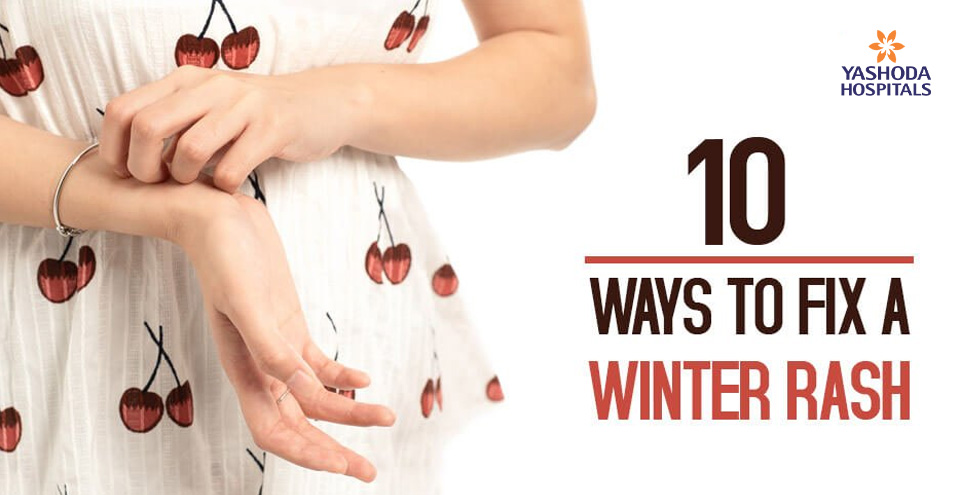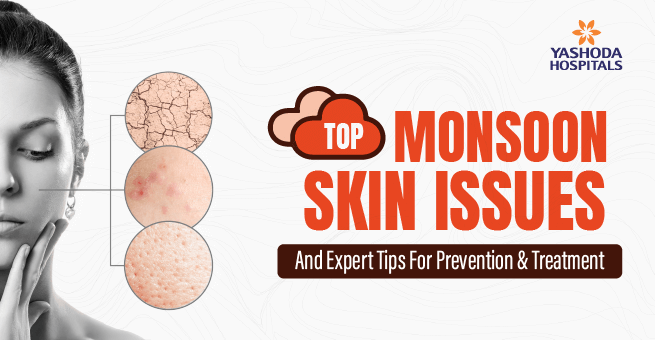How to Fix a Winter Rash?

At a Glance:
Now that the winter is upon us, the temperature outside seems to be less than friendly to your skin. Be proactive and enjoy the weather but remember that as a season it can play havoc for your skin.
What is a winter rash?
Winter causes dry air, making your skin dehydrated and itchy. Hence, rashes tend to appear. These rashes are common during the winter season and are typically known as winter rashes. The name itself suggests a seasonal allergic reaction caused due to cold weather.
What are winter rash symptoms?
Winter rashes occur especially during the winter due to the dry weather Winter rash symptoms can include :
- Noticeable blisters
- Bumps
- Redness
- Itching
- Rough patches
- Even flaking on the skin are signs
What are winter rash causes?
In winters, the cold weather allows the moisture in the skin to escape, leading to dry skin and rashes. Rashes that are caused in winters are a result of cold weather, drop in temperature, lower humidity levels and utilization of central heating.
Other Winter rash causes are :
- Over-washing with harsh soaps.
- Overutilization of cleaning agents and sanitizers.
- Medicine reactions.
- Stress.
- Dry skin
- Bacterial Infection
- Latex allergies.
- In some instances, sunburns can also lead to winter rashes as people prefer sunbathing in winter or excessive use of room heaters.
How bad can a winter rash get?
If not given immediate attention these winter rashes can call for some serious skin issues like that of dermatitis, dermatitis, rosacea and even cold urticaria. A winter rash, if not treated sooner, can trigger further and spread to your whole body, causing more irritation.
Can winter rash happen to anyone?
Yes, anyone can suffer from a winter rash but some people do sustain a higher risk than the rest. People who likely have a skin allergy or any such skin condition can have a higher risk of having a winter rash. Other than this the following people can also be easily prone to winter rashes:
A) Skin conditions like eczema, dermatitis, rosacea and other allergies
B) Respiratory issues like asthma
C) Indulging longer hours in outdoor activities
D) Prone to any sort of bacterial infection or viral infections
E) Dehydration is one of the most common and predominant reasons for having a winter rash.
F) Individuals who are sensitive to cosmetics or other skin products.
What are the effective home remedies for a winter rash?
Winter rash treatment is inexpensive. It involves taking good care of your skin to avoid breakage and further skin problems. Minors of them don’t require a prescription and can be treated at home itself. Some winter rash remedies are:
The resected tumour tissue is sent for histopathological examination to know the grade and whether the tumour is non-muscle invasive or muscle invasive.
1. Moisturization:
By simply moisturizing your skin and re-moisturizing it throughout the day with suitable creams.
2. Drinking plenty of liquids:
Drink at least eight glasses of water (or other liquids) and stay hydrated. Liquids can include tea, coffee, your favorite juice, etc.
3. Milk face mask:
Milk contains a high level of moisturizing components and can help smoothen your skin. All you have to can do is take a piece of clean cloth and dip it in milk and apply it on affected areas and let it soak.
4. Use natural oils:
Natural oils fasten the healing process. Coconut oil promotes healing and can improve skin barrier functions. Safflower oil is ideal for treating irritated skin. Avocado oil can help in recovering the lost nourishment of the skin and can heal dry and damaged skin.
5. Use Vaseline:
Petroleum jelly can be effective to seal the moisture of your skin and lessen the rash.
6. Bathe less often:
Prefer taking fewer baths. Even better if you consider bathing alternate days as the body doesn’t sweat as much and there is less dirt formation.
7. Avoid tight or itchy clothes:
Wear clothes that can make your skin breathe. Such as cotton as it can reduce skin irritation and overheating.
8. Use sunscreen:
Apply broad-spectrum sunscreen in winter when going outdoors.
9. Install a humidifier:
Invest in a good humidifier that adds moisture to your skin.
10. Protect your hands:
Winter rash on hands can be avoided by wearing protective gloves while washing clothes or utensils. You can also soak your hands in water for an extended period and keep re-moisturizing them.
Is winter rash a medical emergency?
Winter rash is not a medical emergency. In case the rashes don’t heal with home remedies and the rash becomes painful, it is advised to immediately see a dermatologist.
How to prevent winter rash?
The most common skin problem that arises with winters is a rash that makes the skin itchy and uncomfortable. Winter rash prevention can be done by following these tips:
A) It is advisable to use non-foaming soaps in winters.
B) Consider turning down the central heaters at night time or even during the day since heaters suck the moisture from the air and make the skin even drier.
C) Avoid using skin care products that contain synthetic dyes, fragrance, alcohol or harsh chemicals.
D) Regular baths can lead to dry skin.
Read more about winter rash symptoms, causes and treatment
If you find any of the above mentioned Symptoms of winter rash then
Book an Appointment with the best dermatologist in hyderabad
About Author –
Dr. V. Surya Prakash ,Consultant Urologist, Laparoscopic, Robotic & Transplant Surgeon
MS (Gen Surgery), FRCSED, M.Ch(Urology), DNB(Urology), D.Lap





















 Appointment
Appointment WhatsApp
WhatsApp Call
Call More
More